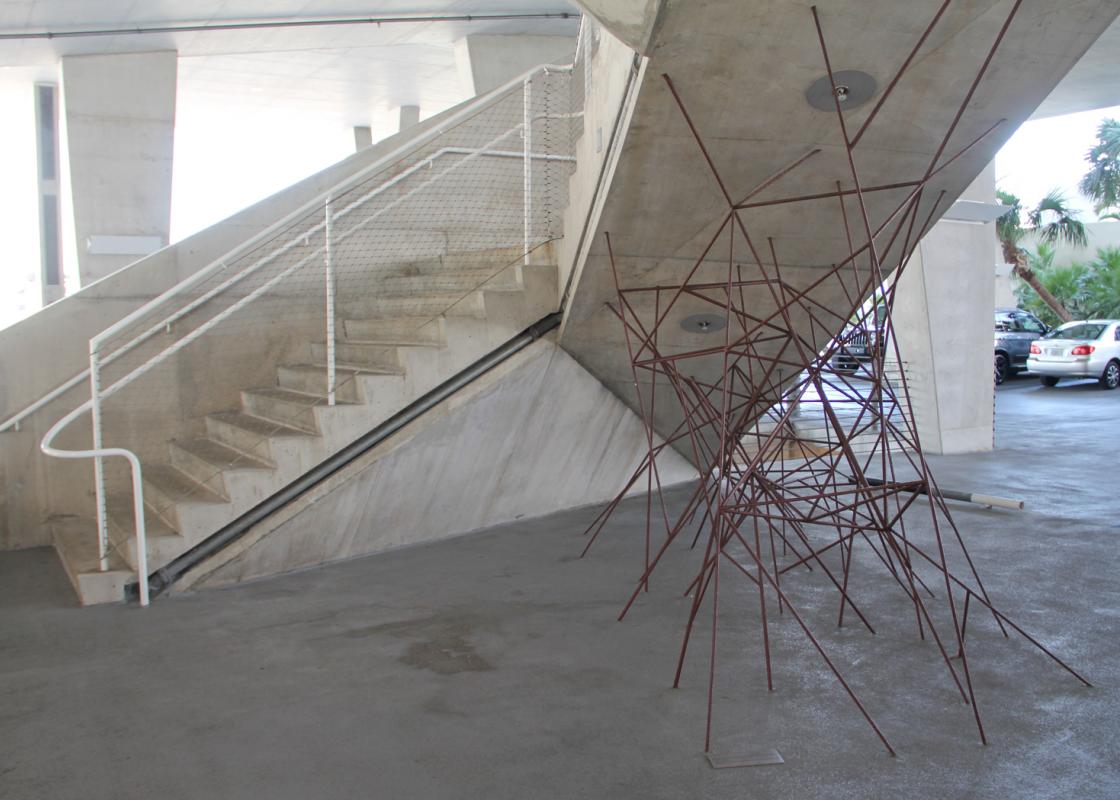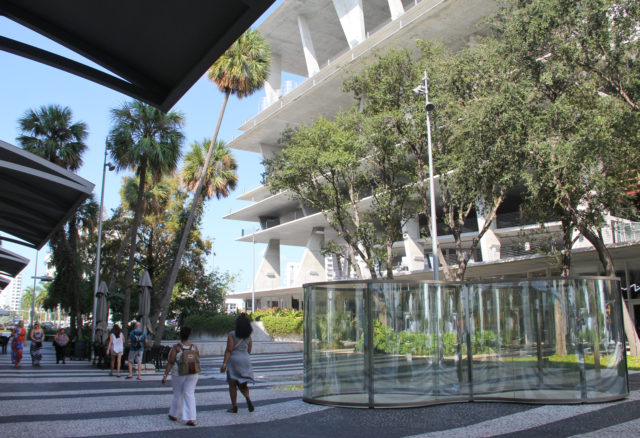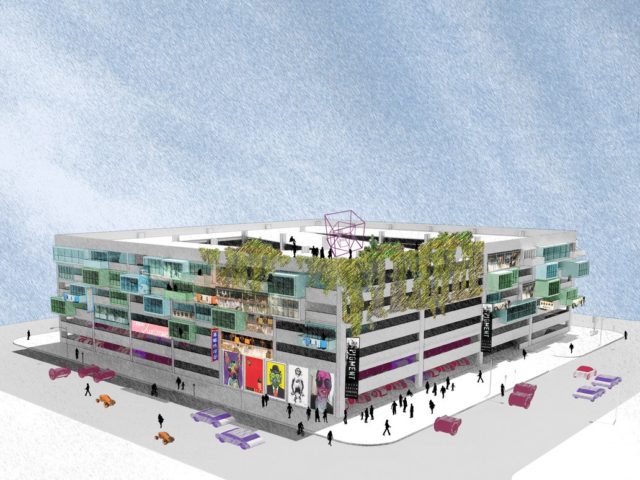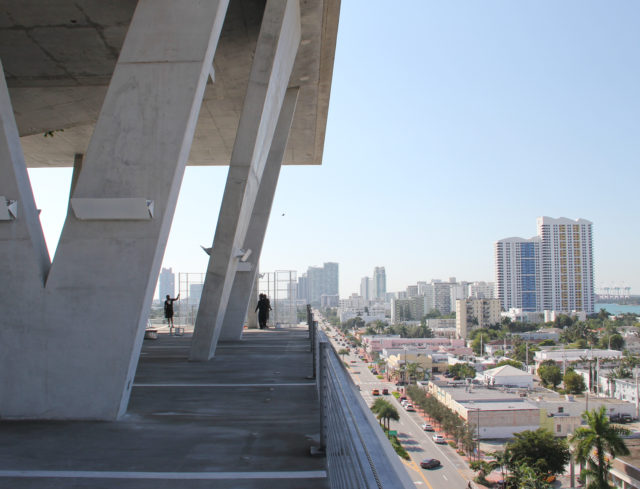I saw the most beautiful parking garage in the world. Located in South Beach, just across the causeway from Downtown Miami, it was designed by Herzog & De Meuron and completed in 2010. It cost $65 million. Inside, there is one site-specific Monika Sosnowska sculpture and 300 spaces --- it costs four times more per hour to park here than other South Beach garages, but some drivers like the exclusivity. "I wouldn’t even think of parking anywhere else,” Douglas Sharon told The New York Times in 2011.
This is not just a garage, you see, but a "unique parking experience." It hosts yoga classes and weddings, lectures and wine tastings. The developer, Robert Wennett, lives in a penthouse on the seventh floor; a fashion boutique is open on the fifth; other high-end retailers are on the ground floor, where the garage meets the pedestrian mall of Lincoln Road, reinvigorated in 2011 by Miami landscape architect Raymond Jungles.
The annual Association of Architectural Organizations conference, "Design Matters," had brought me to Miami. Part of the conference was a tour of Sunset Harbor, a nearby neighborhood, where the streets are being built up to respond to sea-level rise; one study found that that has tripled in South Florida in the last decade. A cafe that used to be at grade, for example, now appears sunken, surrounded by a three-foot-deep "patio." Another commercial building, which had several steps up to its entrance when it was completed in 2014, sits just below the curb. That's how quickly climate change is creating obsolescence, here.
If you accept the hubbub about the future of mobility in our cities, then you have to wonder how quickly technology will create obsolescence among parking garages, including 1111 Lincoln Road. Really, it's already happening. Improved and expanded public transit and Uber, B-cycle, and other sharing services are freeing some of us from the necessity of car ownership. They're changing how we plan, writes Nate Berg. "As cities across the world begin to [prioritize] walkable urban development and the type of city living that does not require a car for every trip, city officials are beginning to move away from blanket policies of providing abundant parking."
What will happen to the abundant parking we have now? SWA Group's Kinder Baumgardner has speculated that surface lots might become markets and garages like 1111 Lincoln Road the next "cool place to live."
In Seattle, a mixed-use tower that includes a parking garage has been designed with this future in mind. It has flat floor plates and an internal elevator that will move the cars in and out of place. This, suggests Aarian Marshall, is just the beginning.
Is 1111 Lincoln Road the last of its kind? When we give up our cars, what will happen to it and other beautiful parking garages? Obsolescence, argues Daniel Abramson, happens "as a result of changing technology, economics, and land use." It is, he writes, the "general condition of change in architecture and cities as a whole --- a relentless, universal, impersonal process of devaluation and discard." Maybe adaptive reusers will mix its uses even more spectacularly and repurpose it into Baumgardner's "cool place to live." Maybe preservationists will rally to protect it as a historic place. Or maybe all $65 million of it will come down, a victim of a past that no longer applies to the way cities work.
Ironically, I took an Uber to it. I had debated renting a car just to park it here, but curiosity has its limits. I walked up the ramp and rode the elevator to the top. Some workers were setting up acoustical panels for some event. All that was in the way of a 360-degree view of the bay and the city were Wennett's private staircase and thin steel cables keeping me from plummeting over the edge. It was sublime. But I had a strange feeling that the experience couldn't last. I looked over my shoulder and checked my watch. I'm glad I saw it when I did.













